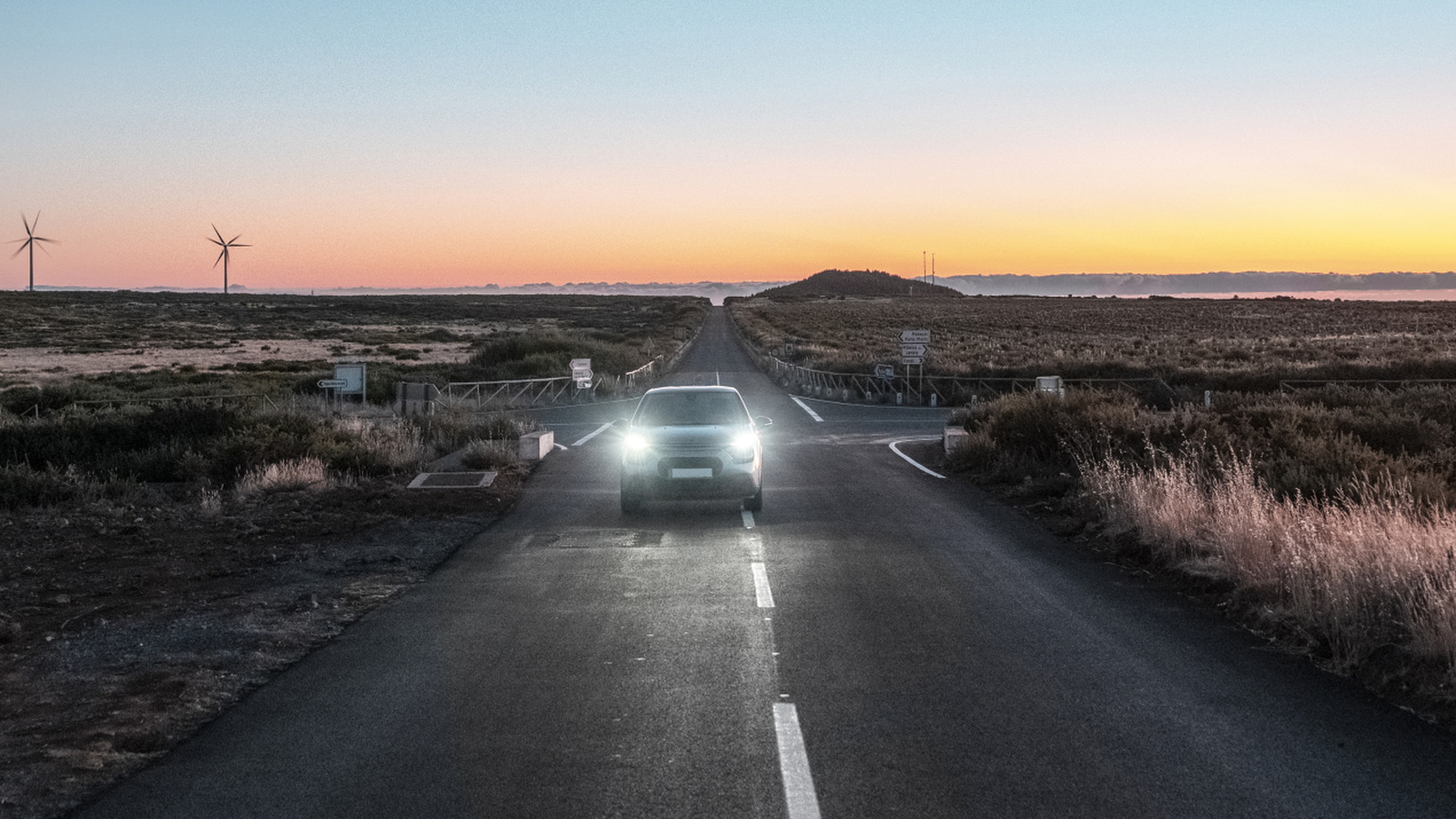
So you’re driving at night, minding your own business, when suddenly your entire world becomes a searing white light. An oncoming car, usually a massive SUV that’s already sitting a foot higher than your sedan, is blasting its high beams directly into your retinas. For a few terrifying seconds, you’re completely blind, desperately trying to keep your car on the road while seeing nothing but starbursts. This is more than an annoyance — it’s incredibly dangerous.
The main problem here is that many drivers fundamentally misunderstand what high beams are for. They aren’t just “brighter” headlights for when it’s “extra dark.” They operate at a very different angle. While low beams are aimed down towards the road, high beams aim straight ahead. This is great for illuminating a long, empty stretch of country road. Unfortunately, it also means that they shoot directly into the eyes of an oncoming driver or reflect off the mirrors of the person you’re tailgating. Using them correctly is simple: if you see another car, any other car, turn them off; but that’s just the basics.
Used correctly, high beams can punch your visibility out to roughly 350 to 400 feet, a huge leap from the 200 to 300 feet your low beams provide. That extra distance is your best friend on deserted rural roads or empty highways, giving you more time to spot a deer, debris, or a pedestrian. You should flip them on whenever you’re on a poorly lit road and there are no other vehicles in sight.
The real skill isn’t knowing when to turn them on but knowing when to kill them. This is where people mess up. The moment you see the headlights of an oncoming car, you need to switch back to your low beams. The widely accepted rule in the U.S. is to dim your lights when an approaching vehicle is within 500 feet. The same goes for when you’re following someone. Blasting their rearview and side mirrors with your high beams is distracting and dangerous.
There are also situations where you should never use them. Avoid high beams in bad weather like heavy fog, rain, or snow. The intense light just reflects off the water droplets in the air, creating a blinding sheet of light that makes it even harder to see — though thankfully, there are ways to reduce glare. Your low beams are actually the better option in these conditions. Fog lights are an even more effective option here. Also, don’t use highs on curvy roads, where you could pop around a bend and unexpectedly blind someone. To know if they’re on, look for the little blue sideways jellyfish symbol on your dashboard. But while following these rules is crucial, it only addresses half of the problem. The other half is the hardware itself.
You aren’t imagining things if you feel like you’re being blinded by headlights more than ever. The intensity of headlights has absolutely increased over the last decade or two. A big part of the story is the industry-wide shift from old halogen bulbs to modern LEDs. Unfortunately, the harsher, bluish-white light from LEDs is perceived by the human eye as being significantly brighter and more alarming than the yellowish glow of a halogen bulb, even if their measured intensity is the same.
Carmakers have also been cranking up the actual power, partly to score better marks on safety tests. A Vox report highlights that the Insurance Institute for Highway Safety (IIHS) started grading headlight performance and initially gave most cars failing grades. This has apparently pushed manufacturers to make them brighter.
Thankfully, technology is also starting to offer a solution. Systems like High Beam Assist (HBA), which Kia includes in cars like the EV9, use a camera to spot other cars and automatically switch between high and low beams for you. Mercedes-Benz offers a similar system called Adaptive Highbeam Assist. The next level is Adaptive Driving Beam (ADB) tech, which can shape the light beam around other cars. However, as CNN reported, super strict U.S. regulations mean it will likely be years before this tech is widely available. So, until these smart systems become standard, the responsibility still falls on us to just be considerate and turn them off.



